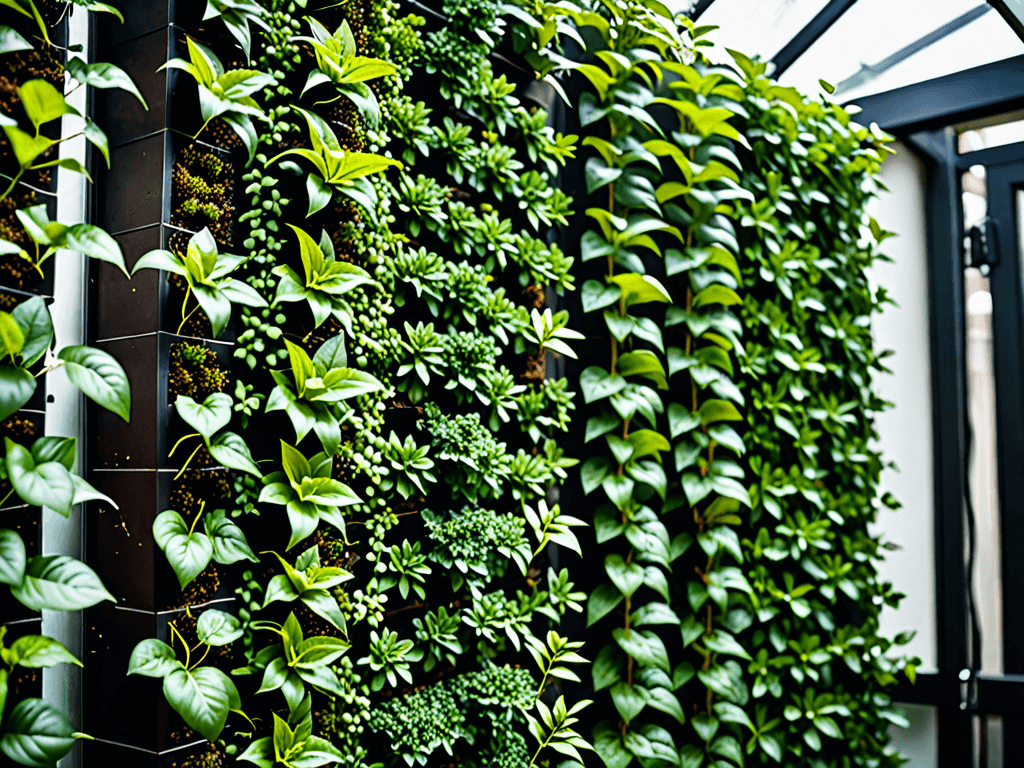Vertical Gardening has become a popular trend among urban gardeners and those with limited space.
This innovative approach allows you to maximize your growing area by utilizing vertical space, making it perfect for small balconies, patios, or even indoor spaces.
Let’s explore how you can transform your gardening experience with this sustainable and space-efficient method, covering every essential aspect from benefits to maintenance.
Introduction to Vertical Gardening
Vertical Gardening offers a creative solution for those looking to grow plants in limited spaces. By utilizing vertical space, this method maximizes plant growth in urban and indoor environments.
It’s an eco-friendly approach that not only saves space but also enhances the aesthetic appeal of your home or garden. Vertical Gardening can involve structures like shelves, pallets, or wall planters, allowing you to customize based on your needs and style.
This gardening trend encourages the cultivation of varieties including vegetables, herbs, and flowering plants, making it versatile and accessible for beginners and seasoned gardeners alike.
Benefits of Vertical Gardening
Vertical Gardening brings numerous advantages, especially for those with limited horizontal space. By growing plants upwards, you maximize space and create more opportunities for diverse plant life, even in the smallest areas.
This method can reduce pest and disease issues such as soil-borne pathogens by elevating plants off the ground.
Vertical gardening also improves air quality indoors and contributes to more sustainable living by allowing urban dwellers to grow their own food.
Moreover, it adds a unique aesthetic element to homes, creating vibrant green walls that can be a beautiful focal point.
Such gardeners often find that the ease of accessing and maintaining their plants is beneficial, as everything is at a convenient height, preventing strain on the back and knees.
Materials Needed for Vertical Gardens
Creating a vertical garden requires several essential materials to ensure its success.
The first thing you need is a sturdy frame or structure, which serves as the backbone of your garden. It can be made of metal, wood, or even recycled materials.
Pots or containers that fit within this frame are next; these can be traditional pots or innovative pocket designs that hold the soil and plants.
Potting soil is crucial for plant health, so choose a high-quality, well-draining mix.
Watering systems like drip irrigation or self-watering setups help in maintaining moisture levels consistently.
Additionally, garden liners or landscape fabric can help protect walls from moisture damage, while trellises or nets provide support for climbing plants.
Don’t forget garden tools like trowels and gloves, essential for planting and maintenance.
Lastly, a selection of seeds or seedlings tailored to your climate and space will ensure the bountiful growth of your vertical oasis.
Step-by-Step Guide to Start
Starting a vertical garden is an exciting project that begins with choosing the right location. Ensure your garden receives adequate sunlight and is protected from harsh winds.
Next, select the type of structure that suits your space, be it wall-mounted or a freestanding setup. Once you have your structure in place, arrange the containers or pockets where your plants will grow. Fill these with high-quality potting soil to promote healthy root development.
Decide on plant varieties based on your climate and the amount of sunlight your chosen spot receives. Start planting from the bottom tier upwards, ensuring that larger plants do not overshadow smaller ones.
Consistent watering is essential, so consider setting up a drip irrigation system to maintain moisture levels. Regularly check your plants for pests and prune them as needed to encourage growth.
With patience and care, your vertical garden will flourish.
Choosing the Right Plants
Choosing the right plants for your vertical garden is crucial for its success. Consider plants that thrive in your local climate and match the sunlight conditions of your garden space.
For sunny locations, herbs like basil, oregano, and mint do well.
In shaded areas, opt for ferns and other shade-loving varieties.
Ensure your selections are compatible with the limited soil volume, prioritizing plants with shallow root systems.
Vegetables such as lettuces and radishes are excellent options for beginners, providing a quick yield.
Always check the growth habit of each plant to avoid overcrowding, and choose a diverse mix to optimize space.
With the right selection, your vertical garden will be both productive and visually appealing.
Maintaining Your Vertical Garden
Maintaining your vertical garden involves regular watering, which is crucial as vertical gardens can dry out faster than traditional gardens.
Use a drip irrigation system for efficiency, ensuring each plant receives adequate moisture.
Fertilizing your plants with a balanced liquid fertilizer every few weeks will help them thrive.
Pruning is essential to remove dead leaves and promote healthy growth, along with checking for pests like aphids or snails.
Monitor the sunlight exposure and adjust plant placement if necessary to ensure they receive the right amount of light.
Cleaning the garden structure periodically helps avoid mold and keeps it looking fresh.
With consistent attention, your vertical garden will continue to grow beautifully over time.
DIY Vertical Garden Ideas
Creating a DIY vertical garden can be a fun and rewarding project that adds greenery to any space. Start by using a wooden pallet as a base; these are easy to find and offer a sturdy structure. Secure landscape fabric to the back and bottom of the pallet to hold in soil while allowing for drainage.
Another simple idea is using hanging shoe organizers, which can be turned into a vertical garden by filling each pocket with soil and planting herbs. Gutter gardens can be made using sections of rain gutters mounted on a wall, which are perfect for growing shallow-rooted plants like lettuce and strawberries.
Repurpose old containers such as tin cans or plastic bottles by attaching them to wood or wire mesh walls. Each of these designs can be painted or personalized to match your decor, creating a unique and practical vertical garden.
Common Mistakes to Avoid
Avoiding common mistakes in vertical gardening can be the key to success. Overcrowding plants is a frequent error; give each plant enough space to grow and receive adequate light.
Ensure your chosen plants are suitable for the amount of sunlight they will receive as insufficient light can hinder growth.
Another mistake is neglecting proper watering; since vertical gardens dry out faster, it’s essential to water regularly but not excessively.
Using poor-quality soil can also slow growth; select a rich, well-draining mix to provide essential nutrients.
Ignoring pruning is another common oversight; regular trimming helps maintain plant health and appearance.
Lastly, choose structures that can support the weight of your fully grown plants to prevent collapse.
In Conclusion: Maximizing Your Vertical Garden’s Potential
Embracing vertical gardening is an innovative strategy for those seeking to capitalize on limited space while enjoying the benefits of gardening.
By understanding the essential materials, following a structured setup plan, and choosing suitable plants, you can create a thriving green space that adds aesthetic value and promotes sustainability.
Maintaining your vertical garden with regular care and attention to common pitfalls will ensure its success.
With DIY ideas and a little creativity, vertical gardens can become a vibrant part of both urban and rural environments.
Ultimately, avoiding the typical mistakes and implementing efficient practices will lead to a flourishing vertical garden, transforming your space into a lush, green oasis.
FAQ – Common Questions about Vertical Gardening
What is vertical gardening?
Vertical gardening is a practice of growing plants upward using structures like walls, trellises, or stacked planters, ideal for limited spaces.
What are the benefits of vertical gardening?
It maximizes space, improves air quality, and provides a creative and aesthetic way to grow plants indoors or outdoors.
Which plants are best for vertical gardens?
Herbs, leafy greens, strawberries, and flowering plants like petunias are great choices for vertical gardens.
How do I water a vertical garden effectively?
Using a drip irrigation system can provide consistent moisture to each plant, ensuring even watering across all levels.
Can I create a vertical garden indoors?
Yes, with proper light and plant selection, a vertical garden can thrive indoors, adding greenery to your home or office space.
How do I prevent pests in a vertical garden?
Regularly inspect plants for signs of pests and use organic pest control methods such as neem oil or insecticidal soap.


